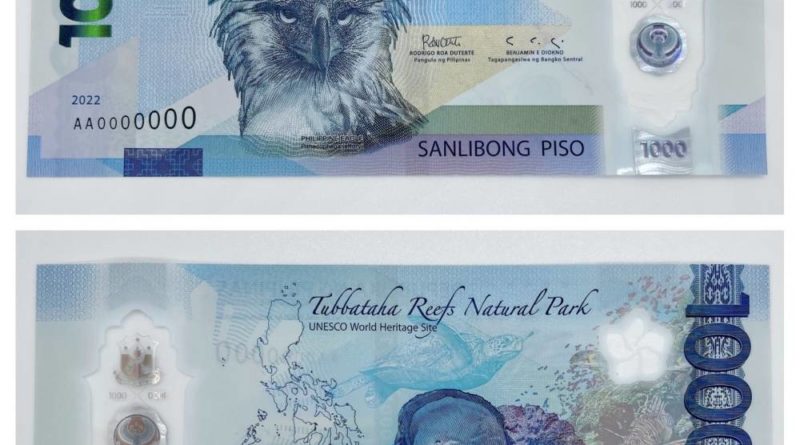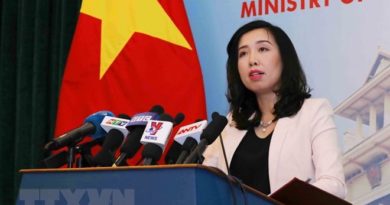FINANCE: MANILA- Netizens slam new PHP1000 polymer banknotes
.
‘Sexist’ & ‘Unnecessary’: Netizens slam new PHP1000 polymer banknotes after being told they shouldn’t fold them in half
.

ICYDK, the Bangko Sentral ng Pilipinas (BSP; Central Bank of the Philippines) released guidelines on handling the new PHP1000 polymer banknotes, which include keeping them flat and not folding them in half — as one inevitably would when storing them in a folding wallet.
BSP Governor Felipe Medalla realizes this and has asked the public to carry a longer-sized wallet instead, adding that women would not have a hard time because they carry handbags, a remark that clearly did not sit well with people online.
In an interview with One News, Medalla said, “One thing to adjust is to have wallets or purses that prevent it from being totally folded. The wallet must be as long as the bill so that the money wouldn’t need to be folded.”
“It’s easier for women because you have handbags,” he added in Filipino.
The BSP first announced last year that they were shifting banknote production from paper made of local abaca to polymer, at the expense of the country’s abaca industry, as polymer bills are supposedly stronger and more hygienic, an added consideration amid the pandemic, they said.
READ: Catanduanes officials oppose BSP shift to polymer banknotes
Yet Medalla warned that the polymer bills, supposedly more secure and durable than abaca bills, could break easily with too much folding.
The new guidelines from the BSP have raised concerns among netizens, who argued that handling the new polymer banknotes required more care than the traditional paper bills.
“Does he really think most laborers use wallets?” One user asked.
“Tell that to the market vendors, jeepney and tricycle drivers, and bus conductors,” another said.
And with Medalla singling out women and assuming that all women carry handbags, a chorus of netizens replied with, “sexist much?”
insensitivity by placing the burden on the masses tapos may twinge of sexism pa? pick a struggle https://t.co/zMVzII5GFX
— kent sorgon, he/his (rage era) (@kntsrgn) June 27, 2022
“What an assumption that it’s easier for women because they have handbags. Gender issue here. And that people use wallets or that all people work clean jobs that do not subject cash to water, soil, friction,” one user said.
“The added sexism is the icing on the cake,” another said.
Last year, the BSP revealed their plans to test polymer on P1,000 bills on a limited basis in early 2022.
First look: 1,000-piso polymer banknotes
Published December 11, 2021, 1:52 PM

BSP polymer banknotes
“It was designed by BSP and approved by the NHI (National Historical Institute),” said Diokno. “Its issuance has been approved by the Monetary Board and the Office of the President,” he also said.
Unlike other designs in the paper-based New Generation Currency (NGC) series, the polymer banknote will not feature historical figures such as national heroes, former presidents of the Philippines or other prominent political and cultural personalities.
“The new series will focus on fauna and flora in the Philippines. Those with positive Filipino images like tamaraw, sampaguita, etc.,” said Diokno.
When asked why there are no political or cultural leaders in the pastic banknotes, or why only the P1,000 bill are being delivered next year and not other denominations, the BSP chief said that “no such discussion went into the Monetary Board decision-making process”.
“(On) arguments why 1000-piso bill and not other denomination: first, it is the most in demand, hence the cost efficiency gain will be the highest; and second, it is also the subject of the highest attempted forgery — not that it is easy to forge,” said Diokno.
“In fact, it has the most security features and thus the most difficult to forge,” he added, referring to the highest-denominated banknote in the country.
While paper banknotes will still dominate the money in circulation, the BSP wanted to have a test run for polymer money to acquire significant feedback, and to determine the effect of polymer banknotes on currency handling as well as to attest its durability and lifespan.
The COVID-19 pandemic and concerns for sanitizing frequently touched objects including banknotes and coins is a key reason why the BSP has decided to source polymer money.
Polymer banknotes have low bacterial count compared to paper or cotton-based banknotes. Some central banks such the Reserve Bank of Australia have found out that polymer banknotes are safer than paper as it will not host viruses or bacteria. It is the Australian central bank that will print the polymer banknotes by April next year.
The BSP also wants an environmental-safe and recyclable banknotes. The more durable and water-resistant plastic money will have a smaller carbon footprint, lower water and energy usage, and less environmental toxicity, said the BSP.
Also, polymer banknotes will have lower production costs and since it will last longer, it will eventually improve in terms of cost savings. Another potential benefits of polymer banknotes is that it is harder to counterfeit because of its security features.

Ads by: Memento Maxima Digital Marketing
@[email protected]
SPACE RESERVE FOR ADVERTISEMENT











